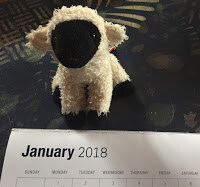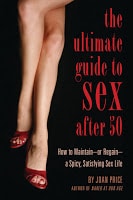Posts Tagged ‘sexual desire’
When Sexual Desire Changes – and What to do About it
“I just don’t feel sexual desire anymore,” many senior women tell me. They miss the excitement, pleasure, and intimacy of sex, and they ask me how to fix this. Others have decided that they’re done with sex and wish their partners would stop pressuring them. Often the lovers and spouses are the ones who reach out to me: “My partner doesn’t desire sex with me anymore, and it’s killing me.”
Many seniors find that sex continues to be terrific, even better than ever, and finally we’re talking out loud about that. But those who avoid sex out of lack of desire usually think that’s just the way things are when we age — but that’s not true!
Spontaneous vs responsive desire
As we age and hormones recede, we may not feel that biological urge or drive for sex anymore. Our bodies and brain don’t automatically kick into gear, even with someone who would have inspired us to peel off our clothes a few decades ago. In fact, there’s nothing “automatic” about our sexual responses at all. That doesn’t mean you don’t feel desire. It means you don’t feel “spontaneous desire,” which is biologically driven, propelled by hormones.
As we age, spontaneous desire wanes, that’s normal. But that isn’t the only way to experience desire, and it doesn’t have to close down our sexual pleasure.
“Responsive desire” means that you feel desire in response to pleasure and arousal. In other words, instead of having sex because you feel desire in advance, you’re letting yourself relax and open to the pleasure and stimulation of physiological arousal. Then the desire will kick in.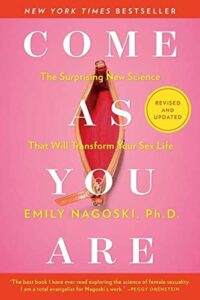
How do you know if this is relevant to you personally? Do you ever resist sex at first because you’re not particularly in the mood, but once you get started, your arousal grows and then you’re really into it? That’s responsive desire. That’s especially true if, at the end, you say, “Wow, that was good. Why don’t we do that more often?”
As Emily Nagoski, Ph. D, explains in Come As You Are: The Surprising New Science That Will Transform Your Sex Life:
The standard narrative of sexual desire is that it just appears – you’re sitting at lunch or walking down the street, maybe you see a sexy person or think a sexy thought, and pow! You’re saying to yourself, “I would like some sex!” This is how it works for maybe 75 percent of men and 15 percent of women…That’s “spontaneous” desire.
But some people find that they begin to want sex only after sexy things are already happening. And they’re normal. They don’t have “low” desire, they don’t suffer from any ailment… Their bodies just need some more compelling reason than, “That’s an attractive person right there,” to want sex.
For more about women’s sexual desire and response, I heartily recommend Nagoski’s book. Read more about spontaneous vs. responsive desire.
How to talk with your partner
Lack of communication makes lack of desire far worse. The jilted partner thinks, “It’s me. My lover doesn’t desire me anymore.” The partner who’s been turned away over and over feels frustrated, alone, unloved, unwanted. They may decide that cheating, leaving, or becoming a monk are the only options. Soon it’s not just sex that feels mismatched — it’s the whole relationship.
Don’t let that happen. Talk to each other openly, lovingly, without blame. Listen to each other without interrupting. Ask for clarification. When you respond to the other, explain your feelings without arguing or coming across as defensive.
Read these sample scripts. Would one of them help get you started? If not, write your own.
• “I admit I’ve been resisting sex lately and I know this hurts you. I love you very much, and I’d like to explain what’s going on for me and hear how you feel.”
• “I’m having difficulty feeling sexual desire. It’s not you — it’s how my body is working these days. I’ve learned about something called ‘responsive desire’ that I’d like to tell you about. Then let’s try it.”
• “I’d like to try a no-goals cuddle time where we’re naked in bed, holding each other, with no assumption that it has to lead to sex. If it does, we’ll enjoy it. But if it doesn’t, we’ll still enjoy holding each other.”
If you can’t have this kind of conversation on your own successfully, please enlist the help of an age-positive, sex-positive couples’ counselor or a sex therapist. The future of your relationship may depend on it.
What to do instead of waiting to be in the mood
(excerpted from “Getting Your Mojo Back” in The Ultimate Guide to Sex after 50: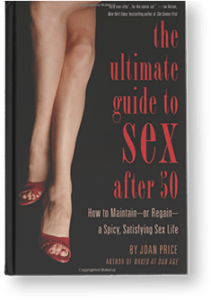
How to Maintain – or Regain – a Spicy, Satisfying Sex Life)
I can’t emphasize enough how important it is to approach our sexuality in this new way: Relax, start getting physically aroused, emotional arousal will happen, and voila, we’ll be in the mood. So the key is to commit to regular sex, partnered or solo. How does this translate to real life?
Here are some tips:
• Schedule sex dates with your partner and/or with yourself.
• Create rituals with your partner that signal sex would be welcome.
• Allow plenty of time for warm up.
• Make sex a habit. The more you do it, the more you’ll want to do it.
Final word
“You may have just saved my marriage,” a woman told me after I explained responsive desire at a presentation. Incorporate this into your sex life — you may feel the same!

====
This article originally appeared as part of Lion’s Den Senior Sex Month, July 2022, at https://www.lionsden.com/blog/when-desire-changes.

Rekindling Desire (3rd Ed.) by Barry and Emily McCarthy
Rekindling Desire (3rd Ed.)
by Barry and Emily McCarthy
Reviewed by Mac Marshall, PhD
“The most disruptive sexual problem is low desire.”
Do you find that you have little desire for sex with your partner? As a couple do you have sex only a few times a year, if at all? Does one of you want more sex than the other, resulting in arguments, recrimination, blame, and hurt feelings? Are you convinced that your “sex light” has gone out? Do you wonder how to bring back intimacy in a marriage? To rekindle desire is to revitalize, reawaken, and reignite it, and that is the focus of Rekindling Desire (3rd Ed.) by Barry and Emily McCarthy. Their motivation for writing this book is to provide “new insights, support, and hope for couples facing desire problems, a no sex or low sex relationship, and desire discrepancy.”
In our youth and young adulthood, most of us experience spontaneous desire, driven by our hormones. Typically as we age, the hormonally triggered desire for sex becomes less pressing. Many people begin to feel less sexy, less desirous, in and beyond their 40s. That doesn’t have to be the end of sex! We can revivify the relationship by understanding “responsive desire.” Learning to give each other sensual pleasure, including plenty of touching, will stimulate responsive desire for sex in both partners.
Rekindling Desire will be of particular help to those in low-desire relationships, or to couples where there is a discrepancy in desire, with one person pursuing sexual connection while the other distances. It offers thorough explanations of what sex therapists have found to be effective for resolving sexual problems and dysfunction resulting from low desire.
This 247-page book is organized into three parts: Awareness (5 chapters), Change (6 chapters), and Relapse Prevention (4 chapters):
- When and Why Couples Lose Sexual Desire. “Desire problems can occur among all types of couples and all age groups.”
- Whose Problem Is It? Hers, His, or Ours? “Sexual desire and desire problems are best understood as a couple issue.”
- Turnoffs: Poisons for Sexual Desire. “A myriad of psychological, bio-medical, and social/relational factors can poison desire.”
- Finding Your Voice: Celebrating Female Sexuality. “The biggest mistake people make is to define female sexuality narrowly. Sex does not equal intercourse. Sexual satisfaction does not equal orgasm.”
- The New Male Sexuality: Confronting Autonomous Sex Performance. “For the great majority of males…sexual dysfunction causes low desire. The main male sexual dysfunctions are premature ejaculation (PE), erectile dysfunction (ED), and ejaculatory inhibition.”
- Being an Intimate Sexual Team: Discovering Your Couple Sexual Style. “Your couple sexual style has two dimensions: first, how to balance each person’s sexual autonomy (“sexual voice”) with being an intimate sexual team; second, how each couple sexual style integrates intimacy and eroticism.”
- Building Anticipation: Bridges to Sexual Desire. “The prescription for sexual desire is positive anticipation, an emotionally intimate relationship, nondemand pleasuring, erotic scenarios and techniques, sharing orgasm, feeling emotionally bonded and satisfied, and maintaining a regular rhythm of sexual contact.”
- Attachment: Enhancing Intimacy. “The essence of intimacy is feeling emotionally open, securely attached, and personally valued.”
- Nondemand Pleasuring: Let’s Play Touchy-Feely. “Pleasuring includes affectionate, sensual, and playful touch, both inside and outside the bedroom.”
- Challenging Inhibitions and Avoidance: Be Sexually Present. “It is both an individual and couple task to increase awareness and challenge inhibitions.”
- Creating Erotic Scenarios: Vital Sexuality. “The essence of eroticism is scenarios and techniques that increase anticipation, subjective and objective arousal, and erotic flow. This includes, but is not limited to, intercourse.”
- Maintaining Gains: Keeping Sexuality Vital and Satisfying. “The core of relapse prevention is awareness that intimacy and sexuality need continual time and energy.”
- Intimate Attachment: Enhancing Your Bond. “Intimacy dates are a powerful resource for preventing relapse and reinforcing relational satisfaction.”
- The Erotic Marriage: Lusting for Life. “You need to challenge routine and mechanical sex, which is a death knell for desire. Eroticism….must be actively cultivated.”
- Valuing a Satisfying, Secure, and Sexual Relationship. “Commit to maintaining a vital sexual bond. Try to go no longer than 2 weeks without some kind of sexual contact. Sex cannot be taken for granted or treated with benign neglect.”
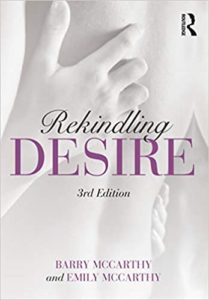
Each chapter is packed with information and also includes a case study, an exercise, a summary, and key points. This is a book you’ll want to study, not read quickly.
In Barry and Emily McCarthy’s view, rekindling desire relies heavily on a couple’s ability to engage in frank, clear, nonjudgmental communication. They see their book as an adjunct to therapy for those who wish to reawaken intimacy and passion in their relationship. “This is a book of ideas, guidelines, and exercises, not a ‘do it yourself’ therapy book,” they state. “It is not a substitute for sex, couple, or individual therapy.”
Barry McCarthy, PhD is a professor of psychology at American University, a diplomate in clinical psychology, a diplomate in sex therapy, and a certified couple therapist. He is the author of over 100 articles, 33 book chapters and 21 books. He has presented over 450 professional workshops nationally and internationally. He received the SSTAR Masters and Johnson award for lifetime contributions to the sex therapy field.
certified couple therapist. He is the author of over 100 articles, 33 book chapters and 21 books. He has presented over 450 professional workshops nationally and internationally. He received the SSTAR Masters and Johnson award for lifetime contributions to the sex therapy field.
Emily McCarthy received a B.S. degree in speech communication, and her writing and wisdom provides a balanced humanistic perspective. This is Barry and Emily’s 14th co-authored book. They have been married for 52 years.
Purchase Rekindling Desire (3rd Ed.)
================

Mac Marshall, PhD is a retired anthropology professor, researcher, and author who is delighted to explore sexuality studies at this time of his life.
Sexy New Year’s Resolutions
Have you made your New Year’s Resolutions for 2018? I’m not talking about those tired (and usually abandoned) promises like go to the gym, stick to a budget, and stop junk food snacking. I’m talking about Sexy New Year’s Resolutions — changes and commitments that will give you a richer, more joyful sex life, especially at our age. And they’re fun to put into action!
You may know that I write a monthly “Sex at Our Age” column for Senior Planet. Usually I answer a reader’s question in this column, but occasionally I take a different path. This month, my Sexy New Year’s Resolutions offer you 14 tips and lifestyle changes that will make a huge difference if you follow them fully. Here are some examples. (Read the others here.)
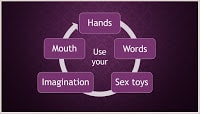 Redefine Sex. Change your definition of sex to whatever activities arouse you and bring you sexual pleasure, partnered or solo. Embracing a new definition of sex expands your possibilities for pleasure. Read this account of one reader’s experience.
Redefine Sex. Change your definition of sex to whatever activities arouse you and bring you sexual pleasure, partnered or solo. Embracing a new definition of sex expands your possibilities for pleasure. Read this account of one reader’s experience.
Track the Tingle. For quicker, easier, and more satisfying arousal, figure out what time of day you feel most sexually responsive. When you feel the “tingle” – that quiver of erotic possibility – set aside time to indulge yourself sexually or schedule that time on your next free day.
Self-Pleasure Frequently. Solo sex is real sex, and it’s good for your general health, your sexual health and your sense of well-being. Give yourself sexual pleasure, whether you’re in a relationship or not. You’re celebrating your body’s ability to give you exquisite pleasure.
Just Do It. This is for you if you enjoy sex when you do it, but you rarely feel desire in advance. You’re experiencing “responsive desire”: your desire follows physiological arousal instead of preceding it. So just do it, and your desire will kick in.
Exercise Before Sex. Increasing your blood flow with physical activity isn’t only good for the heart and muscles — it’s also good for sexual function and pleasure. One of the best things we can do to speed up arousal and orgasm is regular exercise, especially before sex.
Sex Before Food. Eating before sex sends the blood flow to your digestive system instead of your genitals. Have sex first, then eat. Sexual arousal will be easier, orgasms will be more reliable, and you will relish that meal afterward.
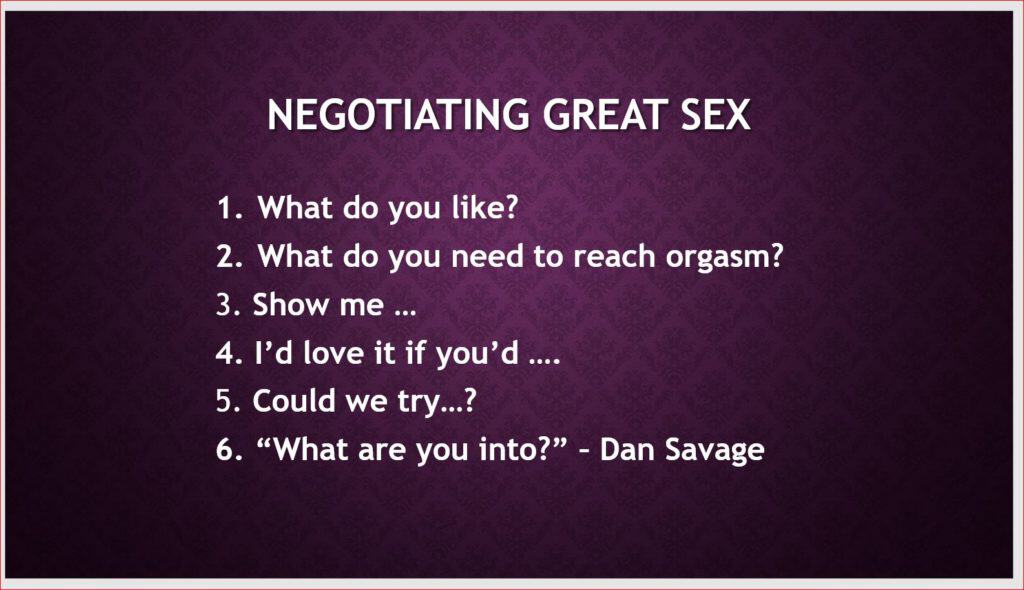 Use Your Words. Learning to talk about sex is the key to getting what you want. A long-term partner is likely to continue doing what used to work, even if it doesn’t work for you now, unless you redirect the action. A new partner wants to know how to please you. Speak up.
Use Your Words. Learning to talk about sex is the key to getting what you want. A long-term partner is likely to continue doing what used to work, even if it doesn’t work for you now, unless you redirect the action. A new partner wants to know how to please you. Speak up.
Have Sex More Often. Difficulty with arousal and orgasm is a good reason to have more sex, not less. The penis and the clitoris require blood flow for engorgement. The more you engage in stimulation – partnered or solo — the more easily the blood flows to the genitals.
Committing to a year of resolutions is daunting, I know. But did you know that it takes just three weeks to make or break a habit? So how about selecting two or three of these resolutions and committing three weeks to seeing how they work for you? Chances are you’ll want to keep doing them. Let me know!
Have you checked out my senior sex webinars? Be sure to subscribe to my newsletter, where you’ll get special discounts on my webinars and more.
Getting Your Mojo Back: Excerpt from The Ultimate Guide to Sex after 50
I used to be eager for sex, easily aroused. My desire dipped after menopause and now barely exists. I can go weeks or more without desiring sex or thinking much about it. The funny thing is, if I get started, I like it, but it’s so hard to get in the mood.
The number one sex problem that I hear from women is the lack of desire for sex. They do still enjoy sex once they get started, they tell me, but they’re seldom in the mood ahead of time. It isn’t just a problem for women—many men also report decreased desire—but for women, it’s the primary complaint. The problem is that if we wait for the mood and don’t make sexual pleasure a priority, we’ll rarely have sex.
There are lots of reasons that you may be feeling decreased desire, but let’s cut to a solution that works first, and figure out the reasons afterward:
Instead of waiting for the mood, start getting yourself sexually aroused—on your own, with a partner, or with a vibrator. Just do it. The physiological arousal will trigger the emotional desire.
That’s the opposite of the way it used to work! When we were younger, our hormone-induced sex drive bombarded our brain and body with desire—especially during our most fertile times. This was simple biology. A glance, a thought, a murmur, a fantasy, or a touch sparked the mood. Once in the mood, we opened ourselves to the pleasures of physiological arousal. We got turned on, our arousal built, and we crashed joyously into orgasm.
But now, this all works the other way around. Instead of waiting forever for the mood to strike, we can induce the mood by letting ourselves get physiologically aroused as the first step. Arousal will lead to mood and desire, instead of vice versa.
Here are your new mantras:
- Desire follows action.
- Use it, don’t lose it.
- Just do it.
“You may have just saved my marriage,” a woman told me after I gave this suggestion at a presentation. Try it—you may feel the same!
I can’t emphasize enough how important it is to approach our sexuality in this new way: Relax, start getting physically aroused, emotional arousal will happen, and voila, we’ll be in the mood. So the key is to commit to regular sexual pleasure, partnered or solo.
How does this translate to real life? Here are some tips:
- Schedule sex dates with your partner and/or with yourself at least weekly, more is even better.
- Exercise before sex for faster arousal and easier orgasms.
- Create rituals with your partner that signal sex would be welcome.
- Allow plenty of arousal time — no rushing, no goals except pleasure.
- Make sexual arousal and orgasm a habit, whether you’re partnered or on your own.
 Make sexual pleasure a habit. Give yourself sexual pleasure frequently, and you’ll find that you’ll become aroused more easily and enjoy sex more!
Make sexual pleasure a habit. Give yourself sexual pleasure frequently, and you’ll find that you’ll become aroused more easily and enjoy sex more! Order here for an autographed copy, purchase from your local independent bookstore, or order from Amazon.
